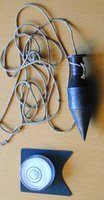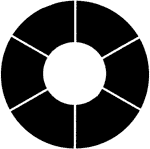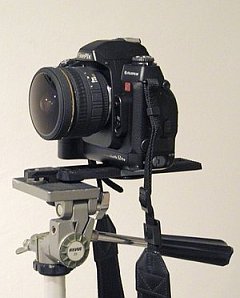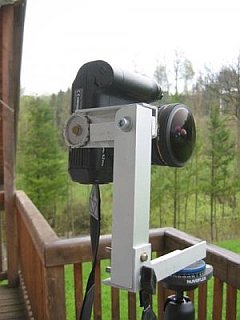Thanks to the following people who helped me improving this tutorial:
John
Houghton |
Creating a 360 degree VR (1) |
|||||||||
Go here if you look for an updated tutorial for PTGui V5 and above!
|
||||||||||
Part 1: Equipment and Preparation, The Nodal-PointWhat is the nodal-point?Close one eye and look at the edge of your monitor. Now
rotate your head a little and keep looking at the edge of the monitor. You
will notice that the monitor's edge is changing its position relative to the
background.
Why Fisheye?There are 2 different methods of taking photos for a full 360x180°-image: A common wide-angle lens with 28-35mm demands about 30-50 photos that have to be stitched afterwards! Using a fisheye reduces the number of photos down to 3-8. Especially in scenes with moving objects or handheld photography you will notice the advantages of 180° lens. What are the basic techniques when using a fisheye?With tripod:If you want to minimize the effort and trouble in creating your VR, use a tripod and a nodal-point adapter. There are also professional ones available from Manfrotto, Kaidan, Novoflex and others.
|
| The
Philopod: What you need is a cord and a small weight. A small
bubble level will also help. Let the cord including the weight hang down. Now you have a position on the floor where to turn around. |
 |
| John Houghton has expanded this idea with a template that you can lie down on the floor. |  |
You may also take a look at my handheld photography tutorial.
When you have done your first photos for a VR-Panorama - Your will be ready to advance to...

